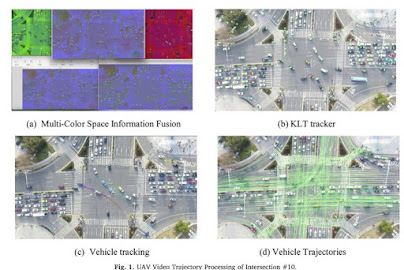Rear-end Conflict: A rear-end conflict refers to a situation where there is a risk of one vehicle colliding with the rear of another vehicle. This typically occurs when the following vehicle is moving at a higher speed than the leading vehicle1. Rear-end conflicts are often observed at signalized intersections and can be influenced by various factors such as signal timing, distance from stop lines, and driver behavior.
For example, at signalized intersections, the majority of conflicts happen in the first half of red and green time, with more severe conflicts occurring at the beginning of red time. Factors such as lateral movement of different vehicle types, dilemma behavior (uncertainty about whether to stop or proceed during a yellow light), and the stop-and-go movement of vehicles due to signal changes can contribute to rear-end conflicts.
In freeway work zones, traditional traffic conflict measures like Time to Collision (TTC) are used to identify rear-end conflicts. However, TTC may not be able to identify potential conflicts in the process of car-following due to the special road section environment of the freeway work zone. To address these limitations, an improved measure called Time to Collision in the Work Zone (WTTC) is proposed based on TTC1.
For instance, misleading signage or short sight distance could lead to a large number of rear-end crashes. But it could also be related to driver behavior. Drivers may be distracted by a mixture of signs, billboards, etc., outside the vehicle or multitasking inside the vehicle (e.g., talking on cell phones, eating and drinking, etc.).
Sideswipe Conflict: Sideswipe conflict refers to a situation where the sides of two vehicles come into contact with each other while traveling in the same or opposite directions. This typically occurs when vehicles are changing lanes or merging into traffic.
For example, consider a scenario on a highway where two lanes merge into one. If a vehicle in the left lane tries to merge into the right lane at the same time as a vehicle in the right lane tries to merge into the left lane, and neither vehicle yields to the other, this could result in a sideswipe conflict.
Moreover, surrogate safety measures (SSM) as indicators of accidents are useful tools in safety evaluations. A new framework is proposed to calculate the risk of sideswipe collisions at each instant based on SSM. For this purpose, time-to-collision (TTC) and post-encroachment time (PET), as the most important time-based indicators would be applied and a new method would be presented to calculate these indicators.
Angle Conflict: An angle conflict refers to a situation where two vehicles approach each other at an angle, creating a risk of collision. This typically occurs at intersections where vehicles are moving in different directions.
For example, consider a four-way intersection where one vehicle is trying to make a left turn while another vehicle is approaching from the opposite direction intending to go straight. If both vehicles enter the intersection at the same time, this could result in an angle conflict.
Another example could be found in roundabouts or rotary ways. Vehicles entering and exiting the roundabout can create angle conflicts as they cross paths at an angle. The weaving traffic movements in such scenarios can lead to potential conflict points.


0 comments:
Post a Comment